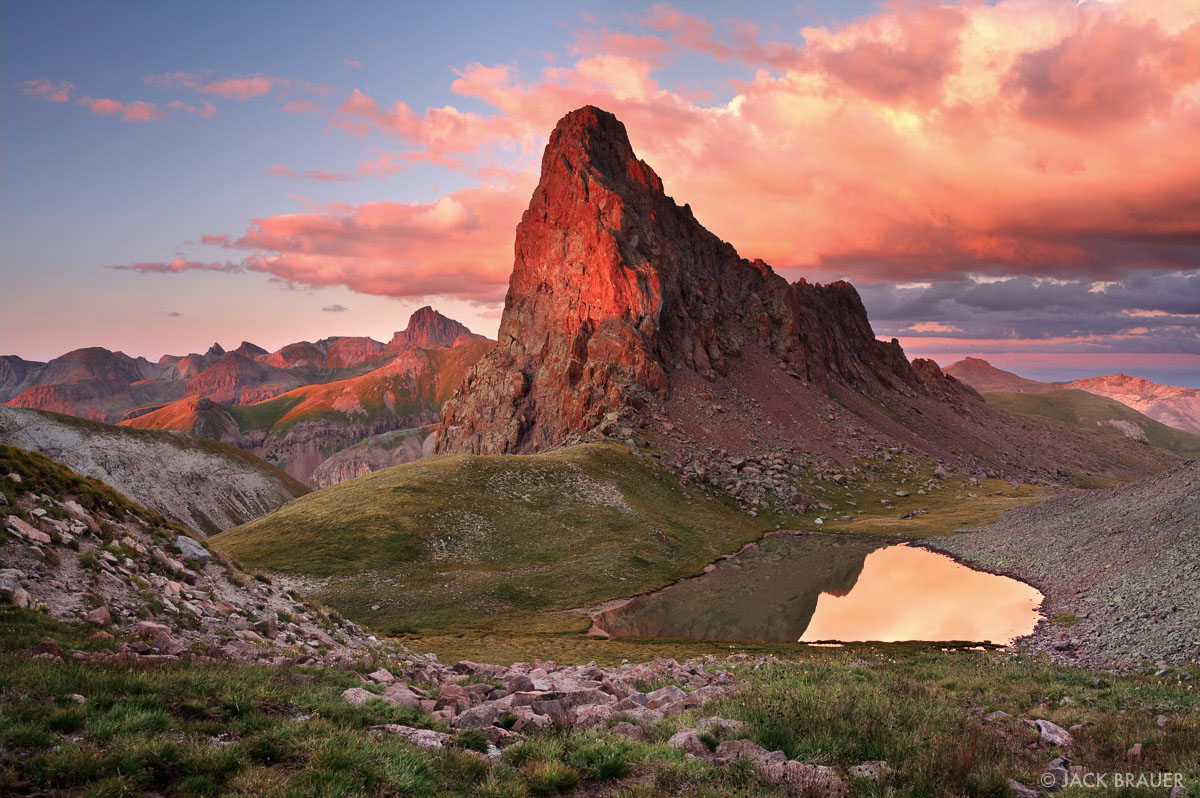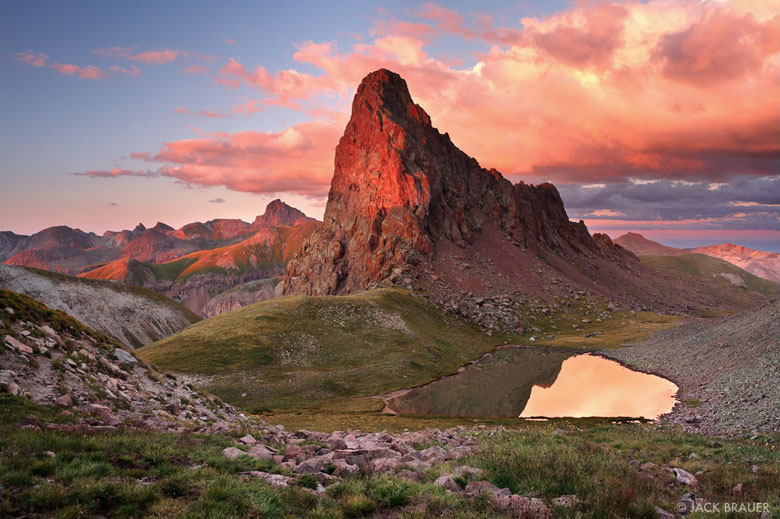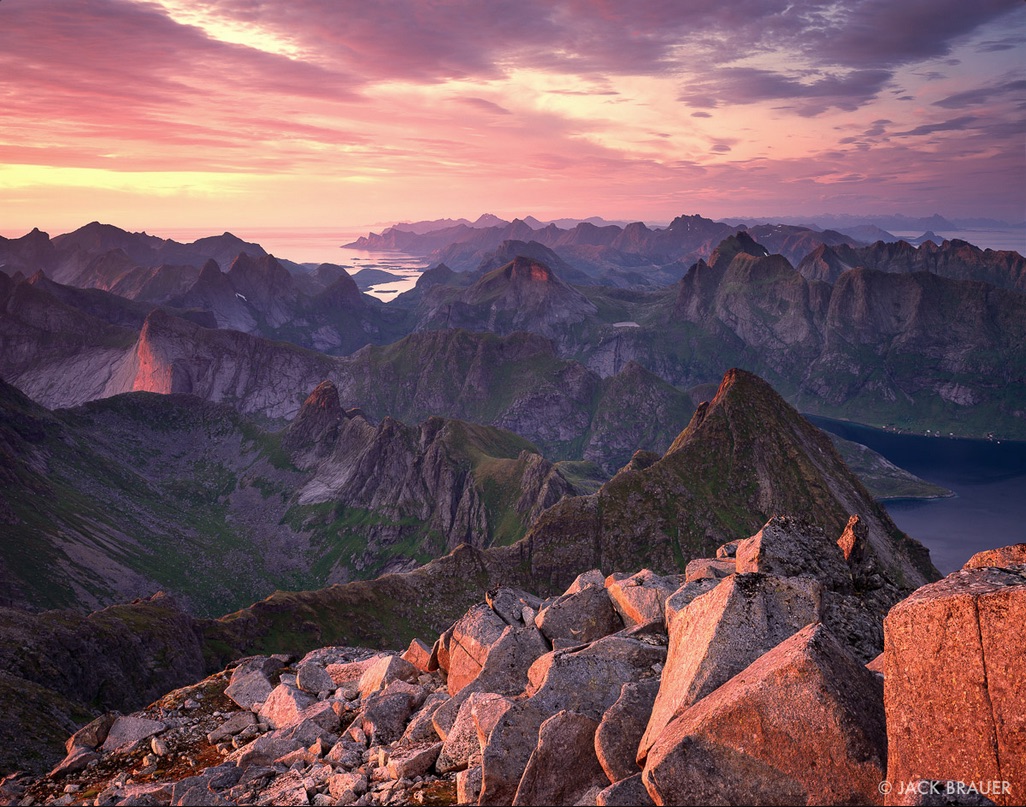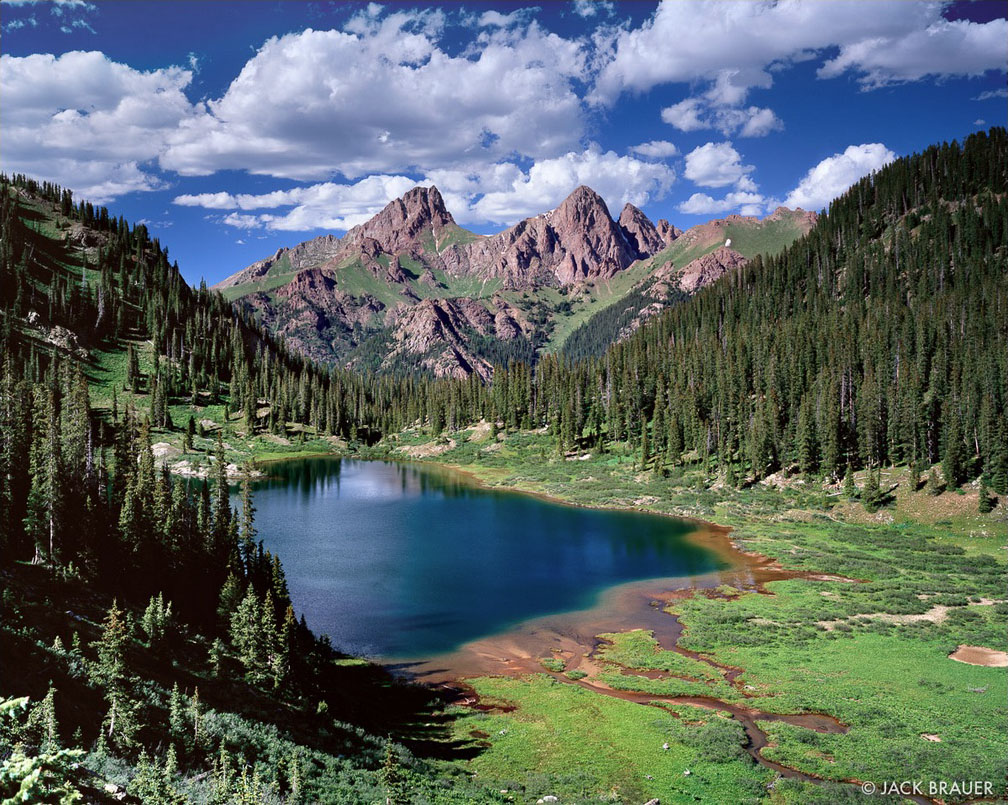

Jack Brauer


Jack Brauer
Landscape photographer Jack Brauer is one of the best: his images combine technical mastery with a command for capturing the subtleties of nature’s brilliance. Furthermore, he is a true outdoorsman, and gets deep into the backcountry for some of the most unique shots in the industry. Jack is based out of Crested Butte, Colorado, and the full collection of his work can be viewed at Mountain Photography by Jack Brauer. He also runs WideRange Galleries, building and designing gallery websites for other photographers.
You graduated from the University of Colorado with a degree in Fine Arts. How did your photography career evolve from there?
In college I started using a digital camera to take pictures of textures that I could use in my intaglio and lithograph plates. I also got into backpacking with my friends, and I started bringing the camera along on the trips. Although I wasn't too serious about photography at first, I really enjoyed photographing the amazing scenery that you can find in the wilderness, and eventually I became more dedicated to landscape photography.
After college I had no more print studio to work in, and most of my creative energy was diverted towards photography and web design. I spent a number of years ski bumming and taking odd jobs, all the while working hard on learning photography and web design in my spare time. Eventually both of those grew from hobbies to freelance work and finally to a full time career with my own business. The photography and web design have always gone hand in hand for me, both based from my computer "studio". I learned web design by constantly developing my own photo website, and nowadays I specialize in building gallery websites for other photographers.
What do you do differently now from when you were starting out?
When I first started out with photography, I'd plan my backpacking trips with friends based on places that looked cool to visit, and I'd just bring my camera along. The photos I took were scenes that I stumbled upon along the way. Now I plan my trips more around specific photographic goals. While I still keep my eyes open for unexpected photos along the way, I usually have a few scenes in mind that I've pre-envisioned based on research of maps and astronomic data, or previous experience and knowledge of the area. In short, my backpacking trips are based around photography much more than they used to be.
Where are some of the places that photography has taken you?
The Western U.S. (Colorado, Wyoming, Utah, Idaho, etc.), Europe (Norway, Germany, Switzerland, Italy, Slovenia, Croatia, Montenegro, Turkey), South America (Peru, Chile, Argentina), New Zealand, and hopefully many more places in the future!
Explain the importance of time of day in landscape photography.
The most reliably interesting color and light is usually around the time of sunrise and sunset. Those are the obvious times when it pays to be ready to shoot in a prime location. Sometimes this involves hiking in the dark, whether early in the morning before dawn, or late at night after dusk. For sunrises it means getting out of the cozy sleeping bag in the dark - this is often the crux of the photographic day! When it's cold or rainy outside, it can be extremely difficult to find the motivation to get up and out of the tent, but sometimes it really pays off big. It's also fun to pay attention to what the moon is doing - lunar alpenglow with the stars above is an interesting kind of light to go for.
During the day I keep my eyes open for possible photos; you never know, and in some circumstances daytime shots work really well. Not every photo has to have the obligatory pink clouds and alpenglow. Cloudy days can make for productive shooting with even lighting for close-ups or forest scenes. But generally during the days I'm trekking to the next spot, or hanging out and relaxing, not thinking so much about photography but rather just soaking in the surroundings.
Tell me a bit about the business side of outdoor photography. What is it like being a professional photographer?
I own my own business and I work from home on the computer. Well, except for when I'm out in the mountains hiking and taking photos, but that certainly doesn't feel like work! But when I'm at the computer, my days are spent processing photos and posting them on my websites, responding to emails, fulfilling print orders and licensing requests, and programming gallery websites for other photographer clients. Recently I've been working with publishing software and am excited to create and publish some photo books in the not-too-distant future.
Working for myself in an internet-based business has enabled a degree of freedom that is priceless. This is very important for my photography (and sanity), allowing me to manage my own schedule around backpacking treks and traveling.
Pick two of your favorite images and give a brief explanation of each.
I have so many favorites—it's difficult to pick any particular two. The photo below of the Weminuche Wilderness encapsulates that feeling of paradise that I find so readily available in the summertime in Colorado. These kinds of places truly are paradise on earth, and spending time there is why I love backpacking so much. I can spend days and days in places like this, wandering around the shore, looking at the fish, laying in the meadows, hiking on the ridges, and mostly just soaking in the scenery. My mind slows down and becomes more quiet and receptive.
This is also an example of when daytime shots can work well. A sunrise or sunset shot wouldn't have the same effect, without the bright green grass and blue lake. This was shot with a 4x5 large format camera on Provia film. I can't remember the settings or even the lens length! I think it was probably a 120mm lens, and I'm pretty sure I used a warming polarizer to cut the glare off the grass and a graduated neutral density filter to keep the exposure under control for the sky area.

The next photo, Wetterhorn Peak, is one of my favorite mountains and this is the best angle of it. I took this on the first night of a 5-day trek around this peak. Claudia, my fiancé, and I hiked up to this high ridgeline for sunset, but I took this photo after sunset, when the moon was rising and the alpenglow illuminated the peak with an even, warm light. Some people have remarked that "it's too bad" the flowers are facing away, but I actually like it that way in this image. It's like they are the audience of the scene, admiring the mountain and the moonlight. The attention is not focused towards the viewer, but rather towards the mountain itself.
This was shot with a Canon 5DII with a 24mm tilt/shift lens, in relatively low light: 4 seconds at f/20 and ISO 1600. By using the lens's full tilt, I was able to keep the extreme close up flowers and the peak both in focus in one shot (something that would require numerous exposures and a mess of focus blending with a regular lens). Because I was at the limit of the lens's tilt focus ability, I also stopped way down to f/20 to ensure that everything was as much in focus as possible. I jacked up the ISO (the sensitivity of the sensor) in order to have a relatively quick 4-second exposure to increase my odds of getting those flowers sharp between gusts of wind.
What advice do you have for people who love photography but aren’t necessarily professionals?
My main advice is to follow your own passions with photography. Nowadays with all the internet photo forums full of people pumping out impressive work, it's easy to be overly influenced by what you see and by whatever trends are popular at the time. If you simply do what you love, and photograph what comes natural to you, then you'll find your path easier and opportunities will open for you. But if you worry too much about what other photographers are doing or what they think, or if you copy other people's photos and styles without passion of your own, then you will likely lose interest in your own photography and everyone else will too.
Besides, it seems that the lines are blurring between amateur and professional photographers. With the high quality of digital cameras, the power of post-processing, and the plethora of readily available information about how to properly use both, many people can now create technically high quality photographs, regardless of whether or not they are "professional." That's all the more reason to follow your own instincts, develop your own style, and shoot for your own gratification without worrying about what the "professionals" would do or how your photos will be received in the photography forums. Your passion will shine through in your photos, and you can't photoshop that!
What’s next for you?
Last year I was out of the country more than I was home, mainly to spend time with my fiancé who is from Germany. She's moving here for good soon and I look forward to spending most of the next year being at home with her in the San Juan Mountains here in Colorado. Maybe a few road trips to the canyon lands in Utah and perhaps up to Wyoming in the summer. Like I mentioned above, I'm also excited about my photo book projects, and during the next year I'll be concentrating on rounding out my photo collections for those.